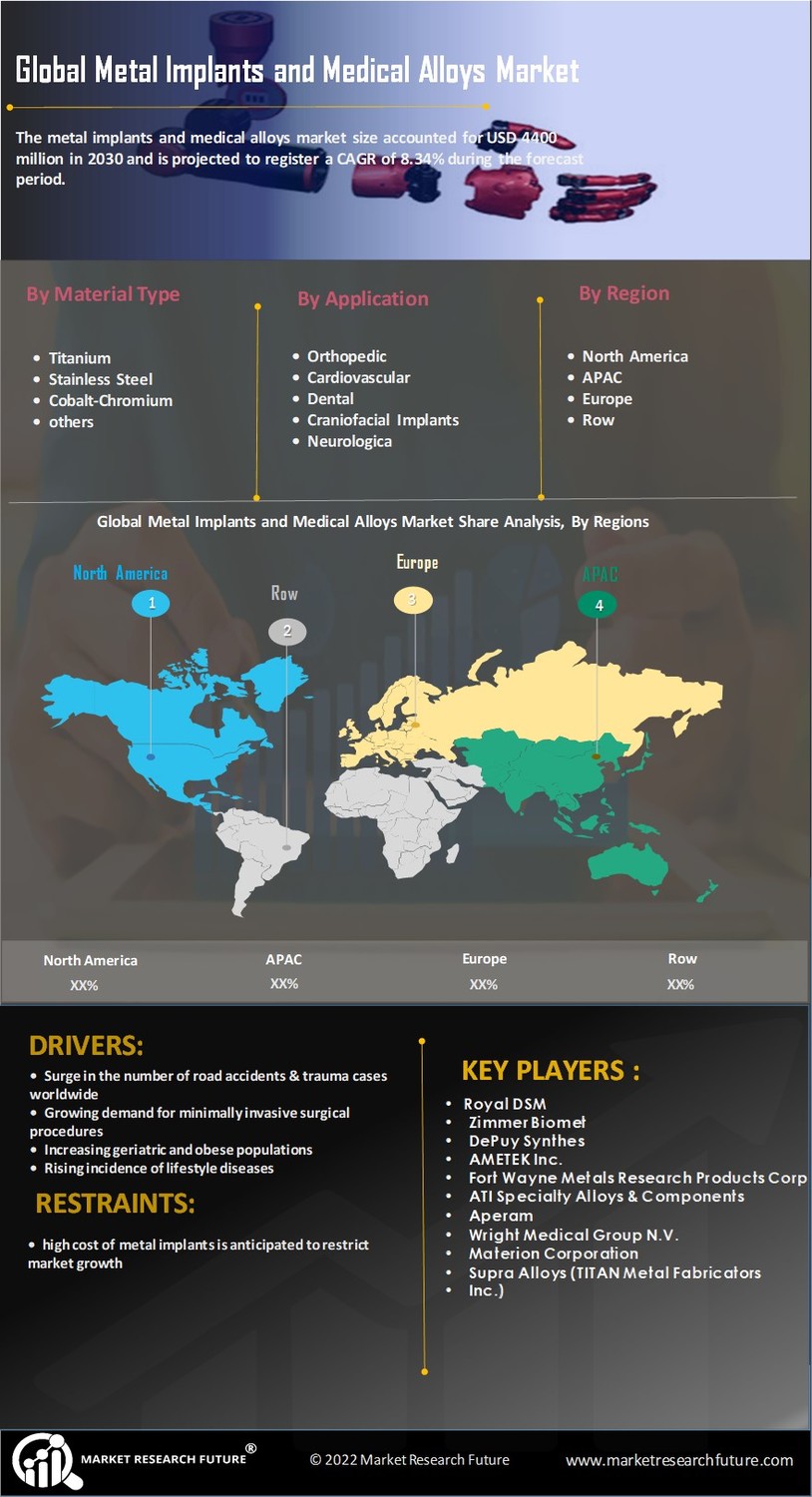Regulatory Support and Standards
Regulatory support plays a pivotal role in shaping the Metal Implants and Medical Alloys Market. Governments and health organizations are increasingly establishing stringent standards for medical devices, ensuring safety and efficacy. This regulatory framework not only fosters innovation but also instills confidence among manufacturers and healthcare providers. For example, the introduction of new guidelines for biocompatibility testing has prompted manufacturers to invest in research and development of advanced alloys that meet these standards. As a result, the market is likely to see a rise in the adoption of high-quality metal implants that comply with regulatory requirements, ultimately benefiting patient outcomes and driving market growth.
Increasing Prevalence of Chronic Diseases
The rising prevalence of chronic diseases is a critical driver for the Metal Implants and Medical Alloys Market. Conditions such as osteoporosis, arthritis, and cardiovascular diseases necessitate surgical interventions that often require metal implants. As the global population ages, the incidence of these diseases is expected to rise, leading to an increased demand for orthopedic and cardiovascular implants. Market data suggests that the orthopedic implant segment alone is anticipated to witness substantial growth, reflecting the urgent need for effective treatment options. This growing patient population underscores the importance of developing durable and biocompatible medical alloys that can meet the demands of various surgical procedures.
Technological Advancements in Medical Devices
The Metal Implants and Medical Alloys Market is experiencing a surge in technological advancements, particularly in the development of innovative medical devices. These advancements include the integration of smart technologies and enhanced imaging techniques, which improve surgical outcomes and patient recovery times. For instance, the introduction of 3D printing technology has revolutionized the production of customized implants, allowing for better fit and functionality. According to recent data, the market for 3D-printed medical devices is projected to grow significantly, indicating a shift towards more personalized healthcare solutions. This trend not only enhances the efficacy of treatments but also drives the demand for advanced metal alloys that can withstand the rigors of modern medical applications.
Rising Investment in Healthcare Infrastructure
Investment in healthcare infrastructure is a significant driver for the Metal Implants and Medical Alloys Market. As countries prioritize healthcare improvements, there is a corresponding increase in the establishment of advanced medical facilities equipped with state-of-the-art technology. This expansion leads to a higher demand for metal implants and medical alloys, as hospitals and clinics seek to provide the best possible care. Recent reports indicate that healthcare spending is projected to rise, particularly in emerging markets, which will likely enhance the availability of advanced surgical procedures. Consequently, this trend is expected to stimulate the market for metal implants, as healthcare providers aim to meet the growing needs of their patient populations.
Growing Awareness of Minimally Invasive Procedures
The growing awareness and preference for minimally invasive procedures are reshaping the Metal Implants and Medical Alloys Market. Patients increasingly seek surgical options that offer reduced recovery times and lower risks of complications. This shift in patient preference is driving the demand for specialized metal implants designed for minimally invasive techniques. Market analysis indicates that the segment for minimally invasive surgical devices is expanding rapidly, reflecting a broader trend towards patient-centric care. As healthcare providers adopt these techniques, the need for innovative medical alloys that facilitate such procedures is likely to increase, further propelling market growth.


















Leave a Comment